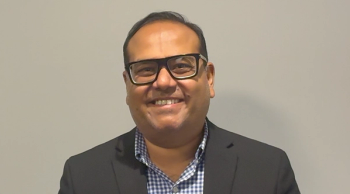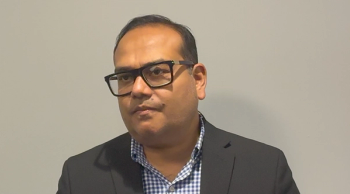
Oncology NEWS International
- Oncology NEWS International Vol 9 No 10
- Volume 9
- Issue 10
Breast Duct Cells Retrieved and Screened for Cancer
ATLANTA-Susan M. Love, MD, predicts that significant new information about breast cancer will emerge as doctors begin using a new duct cell screening technique. Dr. Love discussed her work on ductal lavage at the Era of Hope: U.S. Department of Defense Breast Cancer Research Program Meeting in Atlanta, and updated results of a study of the technique were presented at the Second Annual Lynn Sage Breast Cancer Symposium in Chicago.
ATLANTASusan M. Love, MD, predicts that significant new information about breast cancer will emerge as doctors begin using a new duct cell screening technique. Dr. Love discussed her work on ductal lavage at the Era of Hope: U.S. Department of Defense Breast Cancer Research Program Meeting in Atlanta, and updated results of a study of the technique were presented at the Second Annual Lynn Sage Breast Cancer Symposium in Chicago.
Ductal lavage gives clinicians a way to detect cancerous abnormalities in high-risk women through repeated testing without surgery, she said. It can detect precancerous cells showing atypia as well as malignant cells in fluid washed out of a womans milk duct and withdrawn with a catheter.
In an interview with ONI, Dr. Love expressed the hope that use of the technique would lead to a rethinking of breast carcinoma as a ductal disease rather than a breast disease. All breast carcinomas start in the milk ducts, she said, so the procedure can detect cancers that are not yet seen on mammography.
Dr. Love compared breast lavage to Pap smear screening, since both tests allow the early determination of premalignant and malignant cells from their source of origin.
I think this is going to revolutionize breast cancer, she said, forecasting that widespread adoption of the technique will lead to the discovery of new cancer markers in milk ducts, information about carcinogens that promote breast cancer, and ultimately the delivery of new treatments through the ducts.
Dr. Love, adjunct professor of surgery, University of California at Los Angeles, is a founder and board member of Pro·Duct Health, Inc., Menlo Park, California, which has started to market the Pro·Duct Breast Aspirator and Catheter for breast lavage. The devices received FDA approval last summer.
The company provides training to physicians interested in incorporating ductal lavage into their practice. Dr. Love described the procedure as relatively simple; she said that surgeons would probably be the first to perform it, but that nurse practitioners might start doing it within the next 2 years.
Some pathologists received training in interpreting ductal lavage samples during a clinical trial of the technique at 19 sites in the United States and Europe. Pathologists need training, Dr. Love said, because they are called on to analyze exfoliated breast cells, which are different from cells collected by other procedures.
Ductal Lavage vs NAF
The multicenter trial tested the lavage device on more than 507 high-risk women, aged 26 through 81. These women scored at least 1.7 on the Gail index, had previous breast cancer, or were carriers of a BRCA1/BRCA2 gene mutation. All had normal mammography and physical examination results.
In this study, nipple aspiration was performed on all eligible breasts; then ductal lavage was attempted in all fluid-yielding ducts. The nipple aspirate fluid (NAF) and ductal lavage samples were read by two independent cytopathol-ogists. At the Lynn Sage Breast Cancer Symposium, results were presented on 323 evaluable women and 383 breasts.
Ductal lavage yielded sufficient cellular material for diagnosis in 212 of 307 breasts (69%) when NAF showed insufficient cellular material for diagnosis, while the reverse was true in only 12 of 107 breasts (11%).
Mild or marked atypia was found in 76 of 383 cases (20%) using ductal lavage vs 19 of 383 NAF cases (5%) (P < .001). Marked atypia was detected in 18 ductal lavage cases (5%) but only 7 NAF cases (2%).
In 64 of 76 (84%) cases of atypia found using ductal lavage, the corresponding NAF samples were insufficient for diagnosis or were benign. The reverse was true in 7 of 19 (37%) NAF cases.
Two of the women with markedly atypical cells found by ductal lavage underwent ductal resection for biopsy. Pathology confirmed a 1.8 cm high-grade ductal carcinoma in situ (DCIS) in one patient and a 6 cm intermediate-grade DCIS in the other. Both women had normal mammograms before and after the procedure.
Two other cases of marked atypia with negative mammograms, ultrasound, MRI, and limited biopsy via ductoscope were confirmed at pathology as papillomas. Further workup of the remaining cases of marked atypia found by ductal lavage is pending.
The final data from the trial will be presented at the San Antonio Breast Cancer Symposium in December.
Safe With Minimal Discomfort
The procedure is relatively safe only two presumed infections were recorded in the trialand most women found it less painful than a mammogram, according to Dr. Love, who said she has had the procedure done several times herself.
If women are squeamish beforehand about having something put into their nipple, they usually have no problems with future tests, she said. A topical anesthesia is applied before the procedure, and there is typically no discomfort afterward. A Pro·Duct fact sheet reported, Anecdotally, some patients experience mild discomfort or breast fullness, which is similar to the sensation experienced during lactation.
Nipple aspiration is performed first to identify which milk ducts to lavage. Then the practitioner inserts a double-lumen catheter into a milk duct opening in the nipple area (see Figure). No incisions or skin punctures are required. Each of the lumens is less than 0.5 mm in diameter and is inserted less than 1 cm into the duct. A saline solution is injected into one lumen, causing fluid containing cells from the duct lining to be aspirated through the other lumen.
Milk Ducts Mapped
Dr. Love and her colleagues not only had to create the technology to make the test possible, but they also had to establish the ductal anatomy by creating a map of the ductal system. Nobody had ever bothered, she said.
They developed an anatomic diagram using studies of nipples of lactating women, archival x-ray images called duc-tograms, and breast tissue from mastectomies. They found that, on average, five to nine unconnected milk ducts extend from the nipple area back to the chest wall of each breast. These project in a pattern of two concentric circles without regard to quadrants or radial wedges.
Contrary to prevailing views, the breast is actually a collection of ductal systems, not one organ, Dr. Love said.
With the system so new, she does not have a recommendation for how often the procedure should be performed. Were arbitrarily thinking once a year or maybe even every 6 months, she commented. We dont know how long the duct takes to repopulate after washing it out. Its logical that if there is a pathology, it will repopulate faster, but we dont know.
Breast duct lavage will be especially useful, she predicts, for high-risk women facing tough decisionsfor example, a woman considering tamoxifen (Nolva-dex) for prevention or a woman who has the breast cancer gene mutation and is considering mastectomy.
I see it almost like a cholesterol or bone density test, Dr. Love said. If youre high-risk and you find atypical cells on ductal lavage, it gives you more information to make decisions.
No information on the cost of the procedure was available from Pro·Duct. A spokesperson said the technique does not have a unique CPT code yet for reimbursement by health insurers. The company has set up a reimbursement hotline to advise billing departments on the data and forms needed for claims.
Articles in this issue
about 25 years ago
HER-2/neu Activation May Predict Breast Cancer Prognosisabout 25 years ago
Company Offers Computer-Aided Detection of Breast Cancerabout 25 years ago
ASBD, an Interdisciplinary Group, Fights Breast Cancerabout 25 years ago
How Employers Can Help Caregivers in the Workplaceabout 25 years ago
Only Slight Improvement in Hepatocellular Carcinoma Survivalabout 25 years ago
New BRCA1 Mutations Found in Black and Hispanic Womenabout 25 years ago
Study Shows Profile of At-Risk Elderly Lung Cancer Patientsabout 25 years ago
Scientific Studies Support Strategies to Curb Nicotine Addictionabout 25 years ago
Smoking Declines Among High School Males, But Not FemalesNewsletter
Stay up to date on recent advances in the multidisciplinary approach to cancer.




















































































